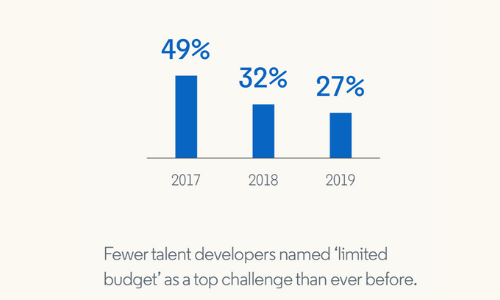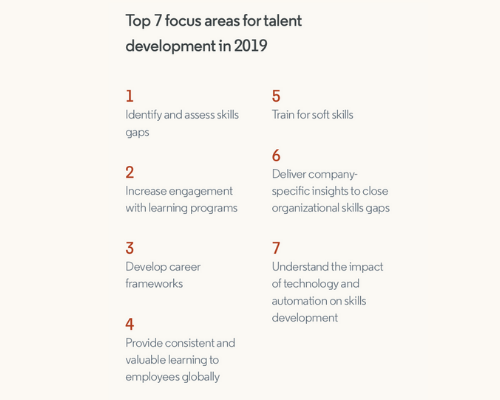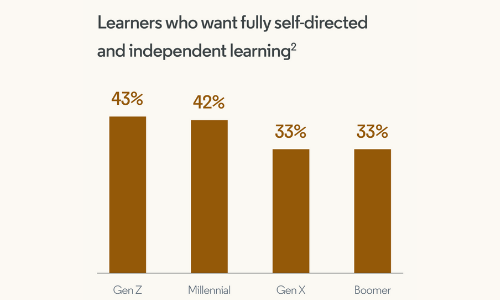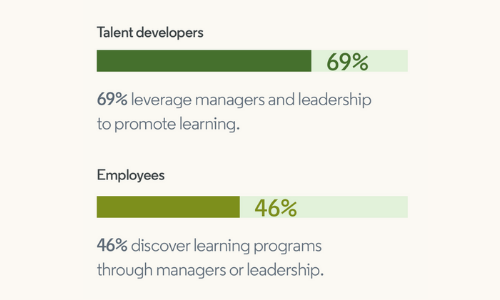The 2019 Workplace Learning Report Finds That L&D is at a Tipping Point
As the modern workplace evolves, we see an imminent shift in the focus and influence of learning and development (L&D) professionals. Executives are increasingly looking to talent developers to support the business in strategic workforce planning, including attracting and retaining talent, and ensuring their people have the right skills for today and tomorrow.
Deemed the “breakout year for the talent developer,” the 2019 Workplace Learning Report shows that talent developers finally have the budget and support to be even more strategic partners to the business. So, what’s next for the talent developer?
LinkedIn Learning surveyed over 3,300 talent developers and workplace learners to create the 2019 Workplace Learning Report. We examined how learning leaders like you leverage increased budgets and influence to close skill gaps, increase engagement, and tap into the potential of every learner. Here is a taste of what’s inside:
4 Insights from the Workplace Learning Report
1. L&D finally have the budgets and executive buy-in to take learning programs to the next level
For years, L&D programs struggled to secure the budget and executive buy-in to fuel more impactful learning programs. We have good news for you. Those limitations are no longer as pressing as in previous years.
Survey results show that budget constraints are becoming far less of a roadblock for talent developers. Only 27% of L&D pros listed “limited budget” as a top challenge in 2019, compared to 49% just two years ago.
As budget concerns decrease, executive sponsorship is increasing with 82% of L&D pros reporting that their leadership actively supports learning programs. If you’re a talent developer and you need more resources to accomplish your goals, then 2019 may be a good year to ask for it.
2. Skills Gaps are the Number One Focus for Talent Developers
With the market for talent still incredibly tight and the shelf life of skills steadily decreasing, talent developers have taken a central role in their organizations to help identify, assess, and close critical skills gaps.
This may be why four out of the top seven focus areas for talent developers this year revolved around resolving skills gaps within their organizations, with “Identifying and Assessing Skills Gaps” listed as their most pressing focus area.
To help learning leaders identify skills gaps in their organizations, we analyzed LinkedIn platform data to identify which hard and soft skills are most in-demand globally in 2019. Check out the full list here.
3. What Employees Want Most: A Self-directed Learning Experience
You’ve heard it time and again: no one has the time to learn. Maybe what learners are really saying is that they want to trailblaze their own learning paths. That’s exactly what we found in this year’s report. Over 40% of Gen Z and Millennial learners and 33% of Gen X and Boomer learners crave self-directed learning experiences, or opportunities to craft their own learning goals and choose the learning content that helps achieve them.
This may be why more L&D pros are investing in online learning. Online learning gives employees the reins, so they can take charge of what they want to learn when they want to learn it. Most talent developers (59%) are spending more of their budget on online learning this year than three years ago.
4. Boost Engagement by Spending More Time Marketing Programs and Leveraging Managers
L&D pros are realizing that marketing is the key to increase learner engagement—whether it’s email marketing, posting on intranets, or leveraging managers and leadership to get the word out about learning programs. That said, L&D pros reported that they only spend 15% of their time promoting their programs to employees. By spending a bit more time crafting marketing campaigns that break through the noise, learner engagement is sure to rise.
In the 2019 Workplace Learning Report, we dig into which learner engagement tactics are working and which remain opportunity areas. While emails successfully reach learners, we found that leaning on managers as learning ambassadors remains a big opportunity.
75% of employees said they would take a manager suggested course, but only 46% of employees said they discover learning programs through their managers. L&D pros know that a message from a manager is powerful. The vast majority of L&D pros aim to leverage managers as learning ambassadors, but the data shows these programs are nascent. Most employees do not find out about learning programs through managers—yet, but these tactics should take hold as L&D continues to hone relationships with managers. Dig into the report to find out ways learning leaders like you tap into managers as a resource.
This is just the tip of the iceberg. There’s so much more!
Of course, these findings are just the beginning. Check out the complete 44-page 2019 Workplace Learning Report and share your thoughts on social #WLR19.
Related articles






